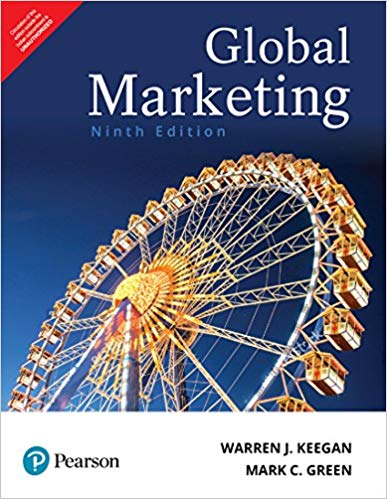1. Anheuser-Busch (A-B), which has been described as an American icon, is now under the ownership of...
Question:
1. Anheuser-Busch (A-B), which has been described as “an American icon,” is now under the ownership of a company based in Belgium. Responding to reports that some consumers planned to boycott Budweiser products to protest the deal, one industry observer said, “Brand nationality is all about where it was born, and also the ingredients of that beer and how they make the beer. Basically, it doesn’t matter who owns it. We are in a global world right now.” Do you agree?
2. Anheuser-Busch has long enjoyed a reputation as a very desirable place to work. Executives were awarded wellappointed corporate suites and traveled on corporate jets; many had secretaries as well as executive assistants. When managers took commercial flights, they flew first class. Most employees received beer for free and could count on donations of beer and merchandise for community events. Tickets to Cardinals home games were also used as a marketing tool. A-B spent heavily on advertising and promotion; various advertising agencies produced about 100 new ads for A-B each year. Given these facts, what changes, if any, would you expect A-B’s new owners to make? Why?
3. In 2009, Italy’s Fiat acquired a 20 percent stake in Chrysler, another iconic American company. Are you familiar with Fiat? What do you think CEO Sergio Marchionne hoped to accomplish with this deal? How might Chrysler benefit from the alliance?
4. Ben & Jerry’s Homemade is a quirky ice cream marketer based in Burlington, Vermont. Founders Ben Cohen and Jerry Greenfield are legendary for their enlightened business practices, which include a three-part mission statement: product mission, financial mission, and social mission. When the company was acquired by consumer products giant Unilever, some of the brand’s loyal customers were alarmed. What do you think was the source of their concern?
Consider the following proposition: We live in a global marketplace. Apple iPhones, Burberry trench coats, Caterpillar earthmoving equipment, Facebook, LEGO toys, McDonald’s restaurants, Samsung HDTVs, and Swatch watches are found practically everywhere on the planet. Global companies are fierce rivals in key markets. For example, American auto industry giants General Motors and Ford are locked in a competitive struggle with Toyota, Hyundai, and other global Asian rivals as well as European companies such as Volkswagen. United States (U.S.)–based Intel, the world’s largest chip maker, competes with South Korea’s Samsung. In the global smartphone market, Apple (U.S.), BlackBerry (Canada), Motorola (China), and Samsung are dominant players. The globalization of the appliance industry means that Bosch, Electrolux, Haier Group, LG, and Whirlpool all compete for precious retail floor space and consumer awarenessand preference.
Now consider a second proposition: We live in a world in which markets are local. In China, for example, Yum! Brands’ East Dawning fast-food chain competes with local restaurants such as New Asia Snack and Haidi Lao. Likewise, the best-selling smartphone in China isn’t marketed by Samsung or Apple; rather, Beijing-based Xiaomi enjoys that distinction. In Taiwan, 85C has overtaken Starbucks as the largest chain of coffee shops. In India, Dunkin’ Donuts goes head to head with local chain Mad Over Doughnuts. In Poland, many consumers frequent small, family owned shops rather than huge stores operated by France’s Carrefour and United Kingdom (UK) based Tesco.1 In Germany, the children’s television powerhouse Nickelodeon competes with local broadcaster Super RTL. In Brazil, many consumers are partial to Guaraná Antarctica and other local soft drink brands made from guaraná, a berry that grows in the Amazon region.
The “global marketplace versus local markets” paradox lies at the heart of this textbook. In later chapters, we will investigate the nature of local markets in more detail. For now, however, we will focus on the first part of the paradox. Think for a moment about brands and products that are found throughout the world. Ask the average consumer where this global “horn of plenty” comes from, and you’ll likely hear a variety of answers. It’s certainly true that some brands McDonald’s, Dos Equis, Swatch, Waterford, Ferragamo, Volkswagen, and Burberry, for instance—are strongly identified with a particular country. In much of the world, Coca-Cola and McDonald’s are recognized as iconic American brands, just as Ferragamo and Versace are synonymous with classic Italian style (see Exhibit 1-1).
However, for many other products, brands, and companies, the sense of identity with a particular country is becoming blurred. Which brands are Japanese? American? Korean? German? Indian? Where is Nokia headquartered? When is a German car not a German car? Can a car be both German and American? Consider:
At the end of this chapter, you will find the rest of Case 1-1. Taken together, the two parts give you the opportunity to learn more about the global marketplace and test your knowledge of current issues in global marketing. You may be surprised at what you learn!
Step by Step Answer:






